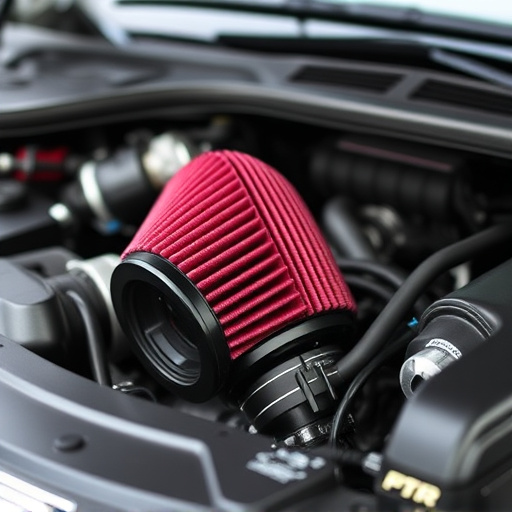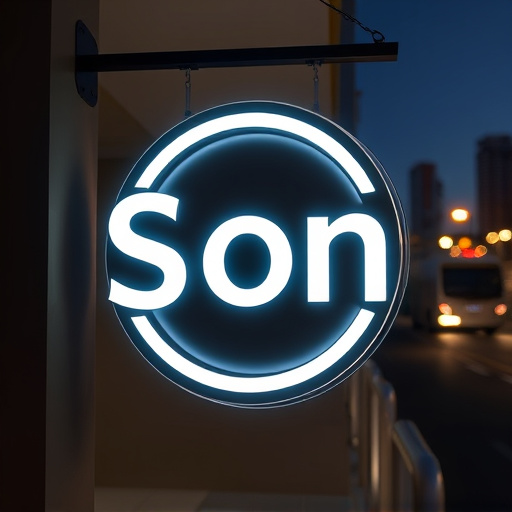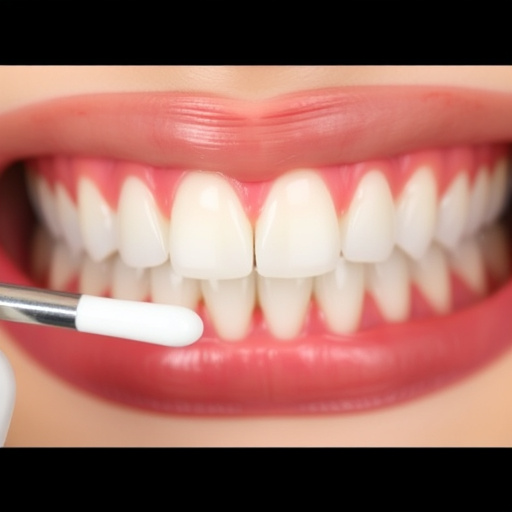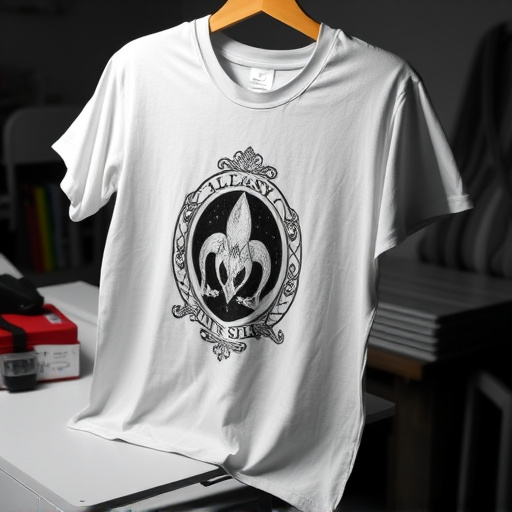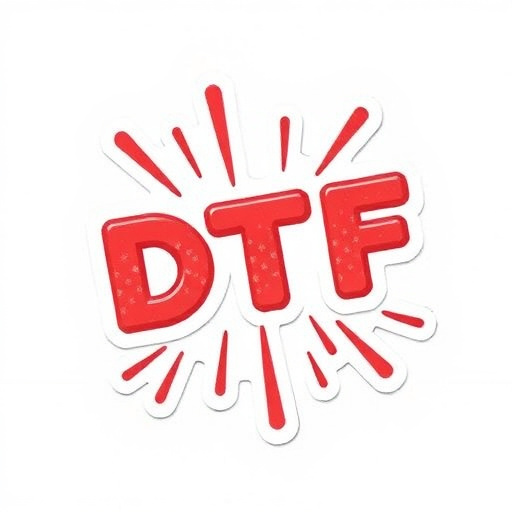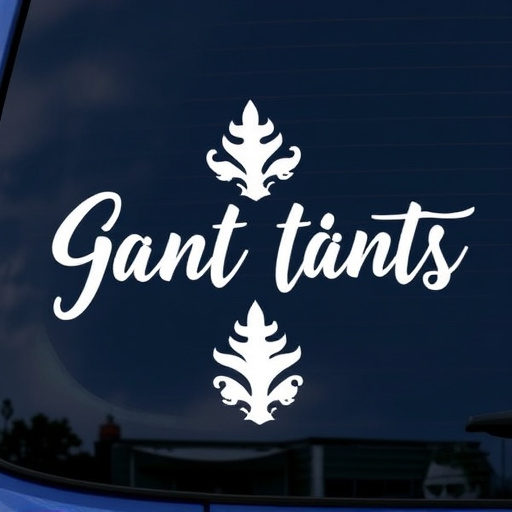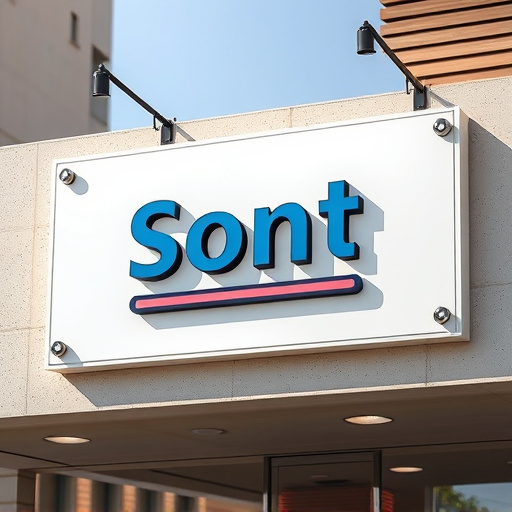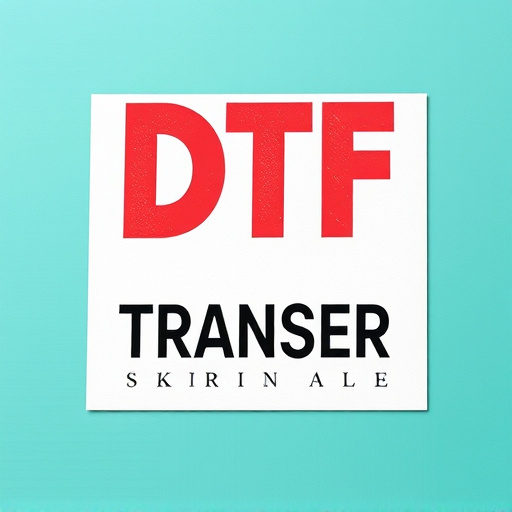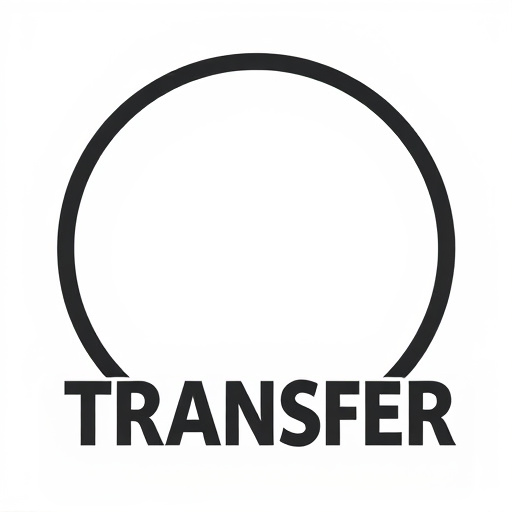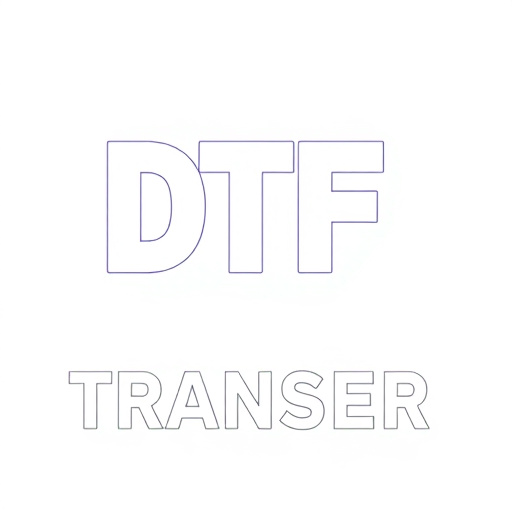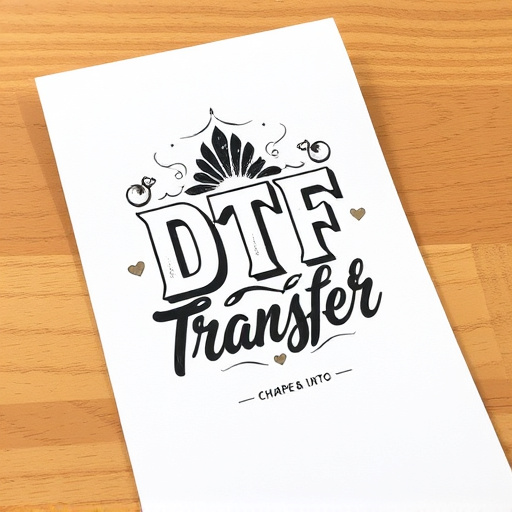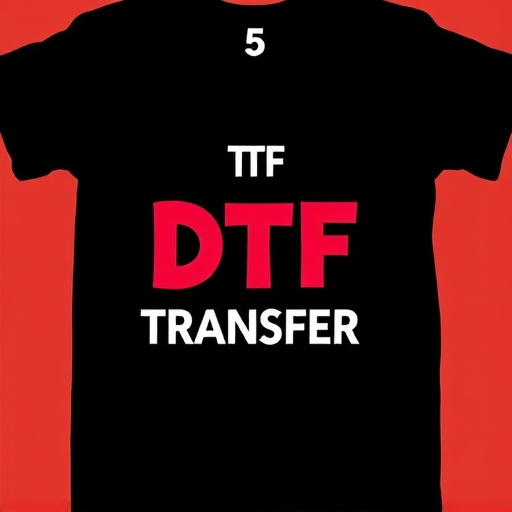Direct-to-Film (DTF) transfer is a cutting-edge printing technique that directly applies graphics to various surfaces using specialized inks and equipment. This method offers intricate details, superior durability, and quick turnaround times, catering to diverse sectors like apparel and signage. Compared to Heat Transfer Vinyl (HTV), DTF provides more direct color replication, richer hues, and versatility across materials, making it an attractive option for custom printing needs. While HTV is versatile and cost-effective, DTF prints maintain their aesthetic appeal longer due to vibrant colors and smooth finish, ensuring durability against fading, peeling, or cracking. Cost analysis should consider setup costs, per-print expenses, and potential wastage in DTF transfers.
In the world of custom apparel and product branding, Direct-to-Film (DTF) transfer and Heat Transfer Vinyl (HTV) are two popular printing methods. This article delves into a comprehensive comparison between these techniques, exploring their unique advantages and drawbacks. From understanding the DTF transfer process to analyzing cost implications, we dissect each method’s impact on print quality, durability, design flexibility, and financial considerations, offering insights for businesses navigating this landscape.
- Understanding Direct-to-Film (DTF) Transfer: A Brief Overview
- Heat Transfer Vinyl: The Traditional Method and Its Advantages
- DTF Transfer Process: Step-by-Step Comparison
- Quality and Durability of DTF Prints vs. Heat Transfer Vinyl Applications
- Design Flexibility and Customization: DTF vs. Heat Transfer Vinyl
- Cost Analysis: Evaluating the Financial Implications of Each Method
Understanding Direct-to-Film (DTF) Transfer: A Brief Overview
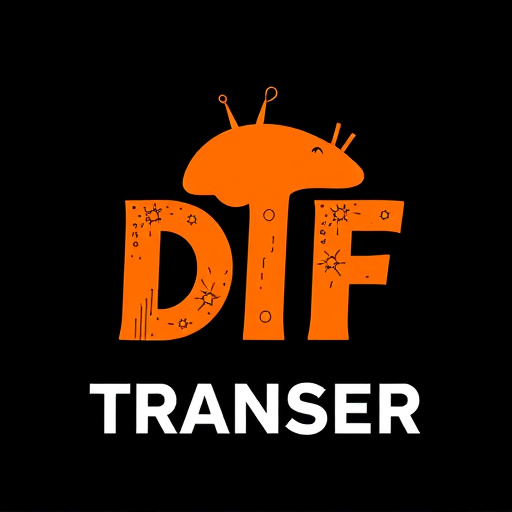
Direct-to-Film (DTF) transfer is a cutting-edge application in the world of printing and design, revolutionizing the way we create and apply graphics. This process involves transferring printed materials directly onto a variety of surfaces without the need for intermediate media. DTF Printing offers an efficient and versatile solution, especially for complex designs and unique substrates. By using specialized inks and equipment, DTF prints can achieve exceptional detail and durability, making it suitable for various industries, from apparel to signage.
The process starts with designing or sourcing an image, which is then printed directly onto a film. This film acts as a carrier, allowing for precise placement on the desired surface. Heat and pressure are applied to fuse the ink onto the material, resulting in vibrant and long-lasting DTF prints. This method eliminates the need for cutting and weeding, streamlining the production process and reducing potential errors. Additionally, DTF Transfer allows for quick turnaround times and easy customization, making it a popular choice for those seeking dynamic and visually appealing designs.
Heat Transfer Vinyl: The Traditional Method and Its Advantages
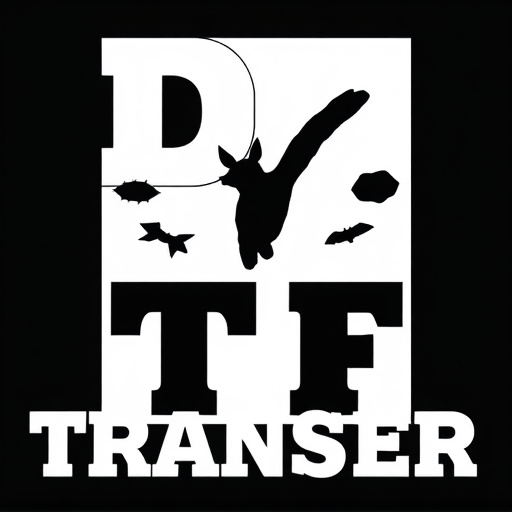
Heat Transfer Vinyl (HTV) has been the traditional method for applying graphics to various surfaces for decades. This process involves transferring a design from a flexible sheet of vinyl onto a substrate using heat and pressure. The advantage of DTF transfer lies in its versatility; it can be used on a wide range of materials, including fabrics, plastics, and even wood. This makes it a popular choice for industries such as apparel, signage, and promotional products.
DTF printing offers several benefits over other methods. It allows for detailed, high-quality prints with vibrant colors and crisp lines. The direct application method ensures that designs are durable and resistant to fading or peeling, making DTF prints ideal for long-term use. Additionally, the process is cost-effective for both small and large-scale projects, making it accessible to businesses of all sizes.
DTF Transfer Process: Step-by-Step Comparison

The Direct-to-Film (DTF) transfer process involves a straightforward yet precise method for creating custom designs on various materials, primarily focusing on textiles and plastics. It begins with digital design creation, where artists or designers use specialized software to craft the artwork intended for printing. This design is then prepared in a format suitable for DTF printers. During printing, the DTF printer applies heat and pressure to transfer the ink from the print head directly onto the target surface, ensuring a crisp and vibrant image.
In comparison with heat transfer vinyl (HTV) applications, DTF offers several advantages. Firstly, DTF prints provide a more direct and intense color replication, eliminating the need for multiple layers as in HTV. This results in richer colors and deeper blacks. Additionally, DTF is suitable for a broader range of materials, including fabrics, leather, and certain plastics, making it versatile for various projects. While HTV still has its place for specific applications, DTF’s simplicity, speed, and superior print quality make it an attractive option for many custom printing demands.
Quality and Durability of DTF Prints vs. Heat Transfer Vinyl Applications
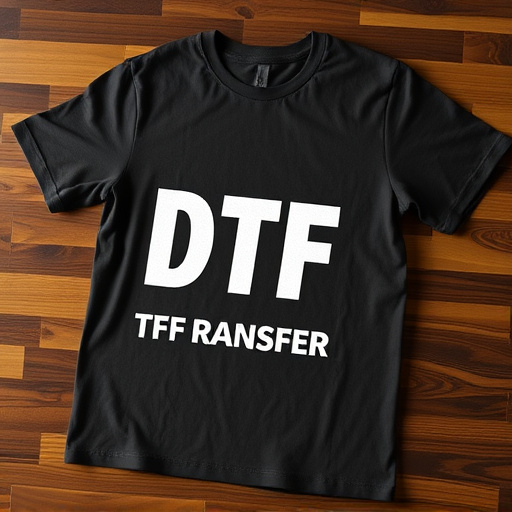
Direct-to-film (DTF) printing and heat transfer vinyl applications are two popular methods for applying graphics to various surfaces. When it comes to quality and durability, DTF prints have gained recognition for their superior performance. DTF transfers offer vibrant colors, crisp details, and a smooth finish, ensuring the design’s longevity. The direct application to the substrate results in a more secure bond, making DTF prints resistant to fading, peeling, or cracking over time.
In contrast, heat transfer vinyl (HTV) applications, while versatile and cost-effective, may not match the durability of DTF prints. HTV often relies on adhesive backing for attachment, which can lead to issues with long-term adhesion, especially when exposed to extreme temperatures or frequent handling. Additionally, the layer of vinyl between the design and the substrate might cause some designs to lose their vibrancy or clarity over extended periods, whereas DTF prints maintain their aesthetic appeal for longer durations.
Design Flexibility and Customization: DTF vs. Heat Transfer Vinyl

Direct-to-film (DTF) printing offers unparalleled design flexibility and customization options compared to heat transfer vinyl (HTV). With DTF, designs can be directly applied to a variety of materials, from textiles to plastics, without the need for intermediate layers. This allows for more intricate and detailed prints, including full-bleed colors and gradient effects, that are hard to achieve with traditional HTV methods. DTF Transfer technology enables creators to bring their most creative visions to life, making it especially popular among artists, designers, and businesses looking to produce unique, high-quality products.
In contrast, heat transfer vinyl requires the design to be first printed on a paper or film carrier, which is then transferred onto the final substrate through heat and pressure. While HTV provides good durability and a wide range of applicable materials, it often limits the level of detail and color vibrancy achievable. Moreover, the process involves an extra step, increasing production time and potential for errors. For applications demanding sharp lines, vivid colors, and complex designs, DTF Printing stands out as the superior choice.
Cost Analysis: Evaluating the Financial Implications of Each Method
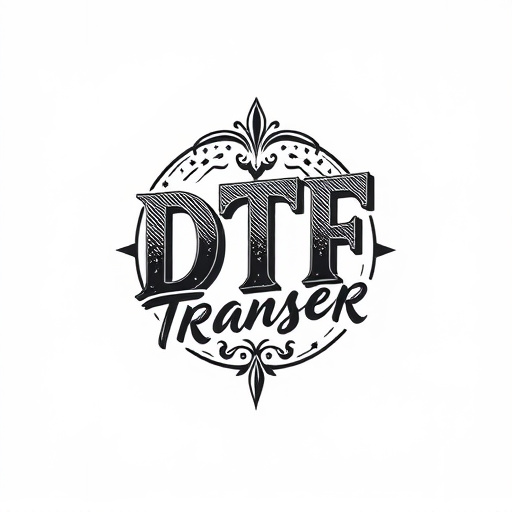
The financial implications of direct-to-film (DTF) transfer versus heat transfer vinyl (HTV) applications are a key consideration for businesses and enthusiasts alike. DTF Transfer and DTF Printing methods offer an attractive, cost-effective solution for small to medium-sized orders. The process eliminates the need for complex set-up costs, making it ideal for one-off or limited runs of designs. This accessibility results in lower per-print expenses, especially when compared to setting up specialized equipment required for HTV applications.
However, for larger volume productions, heat transfer vinyl might prove more economical. While initial costs for HTV machinery and materials are higher, the longevity of these tools allows for significant savings over time. DTF prints, on the other hand, may require frequent replacement as they are more susceptible to wear and tear when applied to certain materials. In terms of DTF Transfers, the cost analysis should also factor in potential wastage due to misprints or imperfect transfers, which can add up in frequency for intricate designs.
